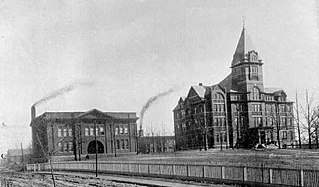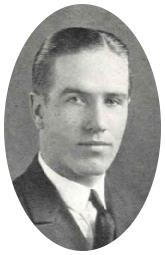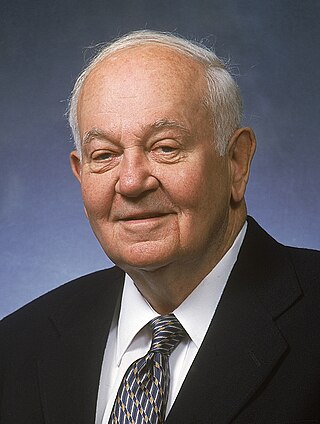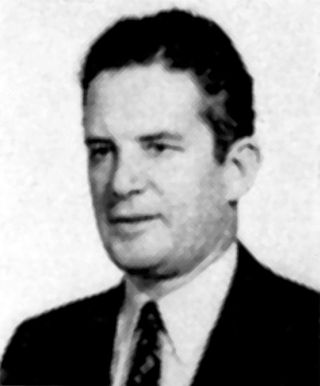
Scientific Atlanta, Inc. was a Georgia, United States–based manufacturer of cable television, telecommunications, and broadband equipment. Scientific Atlanta was founded in 1951 by a group of engineers from the Georgia Institute of Technology, and was purchased by Cisco Systems in 2005 for $6.9 billion after Cisco received antitrust clearance for the purchase. The Cisco acquisition of Scientific Atlanta was ranked in the top 10 of largest technology acquisitions in history and was Cisco's largest acquisition to date. Prior to the purchase, Scientific Atlanta had been a Fortune 500 company and was one of the top 25 largest corporations in Georgia.

Robert C. Michelson is an American engineer and academic who invented the entomopter, a biologically inspired flapping-winged aerial robot, and who established the International Aerial Robotics Competition. Michelson's career began at the U.S. Naval Research Laboratory. He later became a member of the research faculty at the Georgia Institute of Technology. He is the author of three U.S. patents and over 100 journal papers, book chapters and reports. Michelson is the recipient of the 1998 AUVSI Pioneer Award and the 2001 Pirelli Award for the diffusion of scientific culture as well as the first Top Pirelli Prize.
The Georgia Tech Research Institute (GTRI) is the nonprofit applied research arm of the Georgia Institute of Technology in Atlanta, Georgia, United States. GTRI employs around 3,000 people, and was involved in nearly $1 billion in research in 2023 for more than 200 clients in industry and government.
The Georgia Tech Research Corporation (GTRC) is a contracting organization that supports research and technological development at the Georgia Institute of Technology.

Blake Ragsdale Van Leer was an engineer and university professor who served as the fifth president of Georgia Institute of Technology from 1944 until his death in 1956.

The history of the Georgia Institute of Technology can be traced back to Reconstruction-era plans to develop the industrial base of the Southern United States. Founded on October 13, 1885, in Atlanta as the Georgia School of Technology, the university opened in 1888 after the construction of Tech Tower and a shop building and only offered one degree in mechanical engineering. By 1901, degrees in electrical, civil, textile, and chemical engineering were also offered. In 1948, the name was changed to the Georgia Institute of Technology to reflect its evolution from an engineering school to a full technical institute and research university.

Brittain Dining Hall is the primary dining hall of East Campus at the Georgia Institute of Technology. Dedicated in name of Marion L. Brittain, it serves as the primary dining location for all Freshman Experience and Area II housing residents. It is located between Techwood Drive and Williams Street, facing Bobby Dodd Stadium to its west.

William Harry Vaughan, Jr. was a professor of ceramic engineering at the Georgia School of Technology and the founder and first director of what is now the Georgia Tech Research Institute.

Stephen Edward Cross is the executive vice president for research (EVPR) at the Georgia Institute of Technology (Georgia Tech), a position to which he was appointed in 2010. As EVPR, Cross coordinates research efforts among Georgia Tech's colleges, research units and faculty; and provides central administration for all research, economic development and related support units at Georgia Tech. This includes direct oversight of Georgia Tech's interdisciplinary research institutes, the Georgia Tech Research Institute (GTRI), the Enterprise Innovation Institute (EI2) and the Georgia Tech Research Corporation (GTRC).

Glen Parmelee Robinson, Jr., called the "father of high-tech industry in Georgia", was an American businessman and founder of Scientific Atlanta, now a subsidiary of Cisco Systems. Robinson was the first employee of Scientific Atlanta, where he remained CEO then Chairman of the company until he retired.
Harold Alan Bunger was the head of Georgia Tech's chemistry department and the director of the Georgia Tech Research Institute from 1940 until his death in 1941.

Herschel Herbert Cudd was the director of the Georgia Institute of Technology's Engineering Experiment Station from 1952 to 1954, succeeding Gerald Rosselot in that position. He would later become the president of Amoco Chemical Company and serve on the board of the R. J. Reynolds Tobacco Company.

James Emory Boyd was an American physicist, mathematician, and academic administrator. He was director of the Georgia Tech Research Institute from 1957 to 1961, president of West Georgia College from 1961 to 1971, and acting president of the Georgia Institute of Technology from 1971 to 1972.
Paul Weber was the interim president of the Georgia Institute of Technology from previous president Blake Ragsdale Van Leer's death until a replacement was found in Edwin D. Harrison, a period of approximately 18 months.

Robert E. Stiemke was an American civil engineer, director of the Georgia Tech School of Civil Engineering from 1950 to 1962, director of the Georgia Tech Research Institute from 1961 to 1963, and Georgia Tech's first Associate Dean of Faculties and Administrator of Research after July 1, 1963.

Maurice W. Long was an American electrical engineer, radar engineer, and physicist. He served as director of the Georgia Tech Research Institute from 1968 to 1975. He worked as a part-time radar consultant, principal research engineer at GTRI and adjunct professor of electrical engineering at Southern Polytechnic State University.

Donald J. Grace was an American Electrical Engineer. Grace was the longest-serving director of the Georgia Tech Research Institute, holding the position from 1976 to 1992.

The Georgia Institute of Technology is a public research university and institute of technology in Atlanta, Georgia. Established in 1885, it is part of the University System of Georgia and has satellite campuses in Savannah, Georgia, Metz, France, Shenzhen, China, and Singapore.
Harry L. Baker Jr. was the president of the Georgia Tech Research Corporation from its creation in 1946 until his death in 1973.
Montgomery Knight was an aeronautical engineer who specialized in rotary-wing aircraft. He was the first director of the Guggenheim School of Aeronautics at the Georgia Institute of Technology and a founder of and long-time researcher at the Georgia Tech Research Institute.













